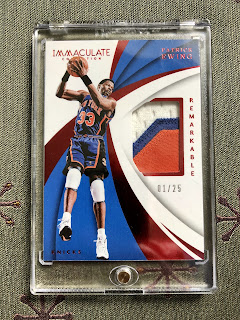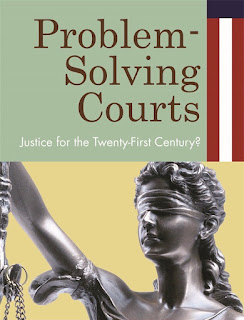Relief Among the Relics
I wrote this piece on my current coronavirus coping strategy and posted it on Medium:
How much would you pay for a 2.5 x 3.5 piece of cardboard?
Before you answer, what if affixed to the cardboard was a swatch of clothing from a famous celebrity? Or the celebrity’s signature?
I have been grappling with these questions with increasing urgency over the past two months as I have gone down a seemingly endless rabbit hole: collecting trading cards that contain pieces of memorabilia taken from the garments of professional athletes.
There are plenty of coronavirus narratives out there -- tales of hardship and heroism and people overcoming enormous obstacles to assert our common humanity. This isn’t one of those. This is, instead, a story of intellectual and emotional regression, of seeking (and finding!) comfort in mindless consumerism and nostalgia.
It all started, innocently enough, with a text. Two of my closest friends from high school began regularly checking in with me shortly after the quarantine began. Our correspondence gravitated toward memories of growing up in Washington DC in the 1980s, including the successes and failures of local sports teams like the Bullets and the Redskins. This soon evolved into a daily exchange of photographs of old trading cards featuring athletic heroes like John Riggins and Wes Unseld.
The collection of cards that I retained from my youth was anemic compared to my friends, so I ventured onto eBay in an effort to keep up. There I discovered a vibrant marketplace of trading cards along with a new wrinkle – many of the most attractive cards contained swatches taken from the jerseys of my favorite players.
These so-called “relic cards” are a relatively recent phenomenon. According to the website The Cardboard Connection, the current mania for relic cards has its origins 20 years ago, when one of the leading card manufacturers, the Upper Deck Company, cut up a bat owned by Babe Ruth and placed some of the shards on top of a limited run of cards featuring Ruth’s likeness. The popularity of the Ruth card among collectors meant that all of the other leading card companies soon followed suit.
Today, anyone with some time on their hands can find thousands of relic cards online. Cards with a piece taken from Joe Montana’s facemask. Cards with a swatch from one of Larry Bird’s shoes. Cards with a bit of Nolan Ryan’s glove. Anything that can be affixed to cardboard is fair game, including pieces of towels, Santa hats, and dirt.
You don’t need much time to find relic cards, but you will require some money: typing “LeBron James jersey card” into eBay yields more than a thousand entries, with a top price of a cool $85,000.
I started small, spending five bucks on a card featuring a piece of hardwood floor that Allan Houston, who used to play for the New York Knicks, allegedly trod upon twenty years ago. When it arrived in the mail, I couldn’t believe my good fortune. A little piece of history in my own hands! I placed the card in a protective case and displayed it prominently on the shelf above my desk.
Pleased with myself, I decided to continue shopping, but vowed that I would spend no more than $20 on any single card. Less than a week later, I had blown through this barrier not just once, but repeatedly and consistently. (To date, I have yet to spend more than $40 on a card on eBay, although I maintain that the Lionel Messi jersey card I purchased for this amount would have been a bargain at twice the price.)
Every day, new packages would arrive at my doorstep containing the fruits of my online spending. As the prices got higher and the cards stacked up on my desk, I began to feel like I might have a problem. Why was I spending so much time and money on such meaningless ephemera?
“Maybe you are just missing watching games,” my wife ventured. This was no doubt true. In normal times, I would spend hours in front of the television each week watching my favorite teams play. My relic card collecting was helping to fill the void.
I am not generally prone to self-reflection, but even I could sense that there was something deeper at work.
In a scary time, the relic cards offer me not just distraction but support. First and foremost, they are a tangible reminder of a different, more innocent time. They bring me back to my youth, when my days were spent memorizing basketball statistics rather than contemplating pandemic prevention.
Even as the cards summon me backwards, they also present me with something important in the here and now: a sense of control. In the world of trading cards, I am the master of my own fate, deciding what to purchase and when and how my acquisitions should be displayed on my shelves. The authority that I wield in this domain is a stark contrast to the power that I exercise in the real world, where I do not have permission to venture out of my house except in rare circumstances.
The sense of mastery that I feel when I survey my tiny kingdom of cards is, of course, an illusion. Beyond my walls, things continue to spiral out of control. Still, I am managing to maintain my sanity. What price would you put on your mental health? I can tell you that mine is worth a $20 Jerry Rice jersey card.
Much as I love the card right now, I am also looking forward to a time when I will put it in a box in my closet and forget about it. Some day soon, I hope my Jerry Rice relic card will serve not only as an remnant of his career, but as an artifact from a moment in history that we have all put behind us.


